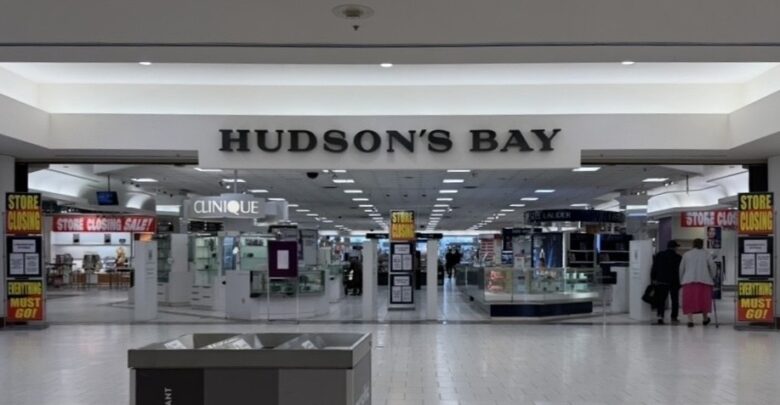 Deena Goodrunning
Deena GoodrunningThe Hudson’s Bay Company (HBC) is the oldest company in Canada, having existed centuries before Canada was officially founded as a country. But, in March, HBC announced that it would be closing down and liquidating all of its assets.
The announcement seemed inevitable. The current Canadian economy has shown that many long-standing businesses are unable to thrive and flourish as they once did. HBC has now joined the long line of other closed-down department stores such as Zellers and Sears.
But, I found the news of HBC closing shocking in comparison to how indifferent I felt when other department stores closed down. And that’s because HBC has been such a prominent part of Canadian history for so long.
The Bay currently exists as a department store that specializes in high-end and luxurious goods. The main floor displays glass counters filled with high-end cosmetic and fragrance brands and racks filled with designer shoes and dresses. People can buy many goods from here, such as HBC Stripes Luxury Soap, furniture, and jewellery.
Its current iteration as a luxury department store makes sense as HBC was born out of a demand for luxurious and fashionable products. Back in the 1600s, beaver hats were the height of fashion in European society. It saw them as a very luxurious fashion item that all the upper class wanted. But, as Europeans hunted beavers to near extinction in Europe, it meant it would be harder to produce beaver hats. However, the so-called discovery of the new world and North America, where an abundance of beavers existed, soon solved the issue.
Voyageurs Médard Chouart des Groseilliers and Pierre-Esprit Radisson founded HBC in 1670. They saw an opportunity to make money by trading for beaver furs from the local North American Indigenous Peoples. HBC would then sell these beaver furs in Europe for exorbitant prices. Having lived in North America since time immemorial, the Indigenous people were skilled in hunting beavers. Indigenous Peoples would trade beaver pelts for items such as pots, pans, beads, fabrics, and the HBC blanket. The blanket became a popular fashion item as Indigenous people would turn them into jackets and coats.
And that fashion statement of Hudson’s Bay Blanket jackets have continued to this day. Many times at powwows and other Indigenous cultural events have I seen people wearing the iconic striped Hudson’s Bay Blanket jacket.
Apart from fashion, HBC greatly impacted Indigenous Peoples in Canada in other ways. Many could say in a bad way as fur traders introduced diseases that decimated the populations of many Indigenous Peoples. The British government eventually used HBC as a tool to stake a claim over the territory HBC operated in. The government purchased this territory from HBC to become a part of the Dominion of Canada.
HBC expanded its territory to encompass much of the land that is now called Western Canada in order to build more forts to trade more furs. One of those forts was Fort Edmonton, now known as the City of Edmonton. Some could argue it was because of HBC’s claim over these lands that these territories didn’t become a part of the United States.
But, in the beginning, HBC respected and recognized Indigenous sovereignty. HBC was founded on the basis of successful relationships with Indigenous people where HBC recognized Indigenous nations as sovereign. It seems somehow fitting that HBC should now go out of business in an era where their success isn’t based on relationships with Indigenous people where they recognize and respect Indigenous nations as sovereign.
And it’s ironic that while HBC is finally gone, Indigenous people still remain here.




